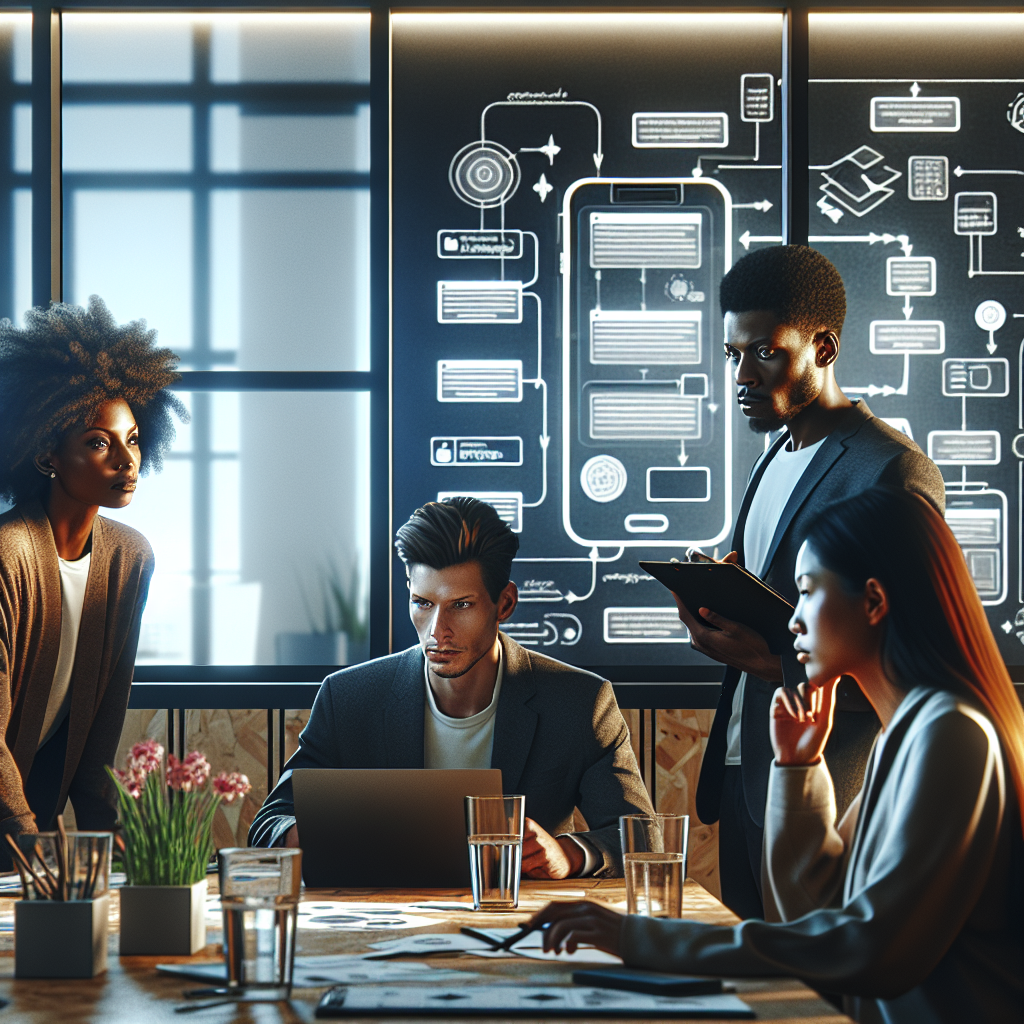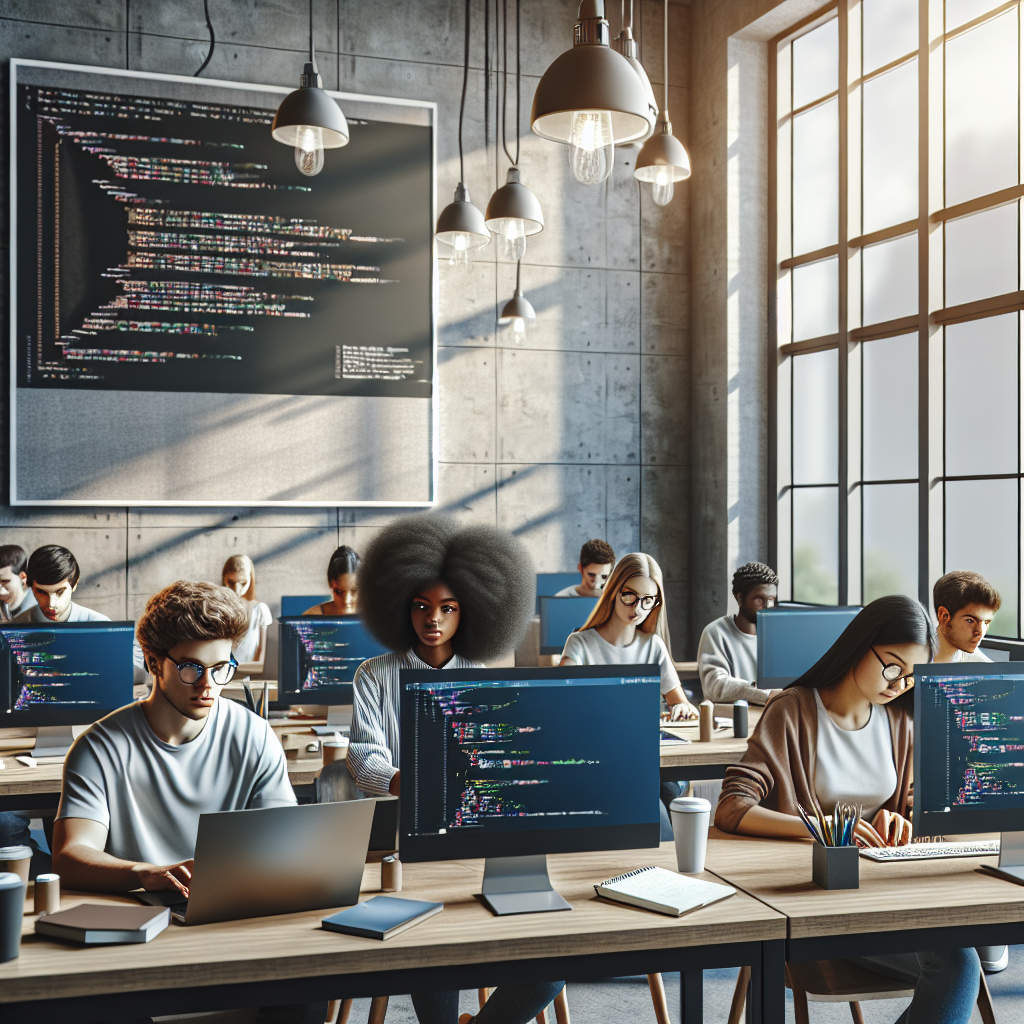Top Mobile Dev Companies You Need to Know About!
The landscape of mobile app development is rapidly evolving, making the role of mobile dev companies more crucial than ever. These firms not only provide technical expertise but also play a vital role in transforming innovative ideas into functional and high-quality applications. With the increasing reliance on mobile technology, businesses must partner with capable developers who understand the nuances of iOS and Android platforms.
By collaborating with proficient mobile dev companies, organizations can access a wealth of resources, including:
- Customized Solutions: Tailored app development that aligns with specific business objectives.
- Expert Guidance: Advice from industry professionals who are well-versed in emerging technologies.
- Strategic User Acquisition: Proven methods for attracting and retaining users, ensuring long-term success for the app.
This partnership ultimately leads to the creation of applications that not only meet user expectations but also drive business growth. If you’re looking to transform your mobile app idea into reality, get a free quote and experience the benefits of working with a top mobile dev company.
Key Features of Top Mobile Development Firms

When evaluating top mobile development firms, it’s essential to identify the key features that set them apart from the competition. These attributes not only enhance the development process but also ensure that the final product is both functional and user-friendly. Some of the most important features include:
- Expertise in Native Development: Leading firms specialize in creating native applications for both Android and iOS, utilizing languages such as Java, Swift, and Objective C to deliver high-performance apps.
- Agile Methodologies: Employing agile practices allows for flexibility and quick adaptation to changes during the development cycle, ensuring that the final product meets client expectations.
- Comprehensive Testing: Top firms conduct rigorous testing at various stages of development to identify and resolve issues early, enhancing the app’s performance and user experience.
- Focus on User Experience (UX): Prioritizing UX design leads to intuitive interfaces that engage users, making the app not only functional but also enjoyable to use.
- Post-Launch Support: Continued support after launch is crucial for app updates, bug fixes, and maintaining user engagement.
These features collectively contribute to the development of successful mobile applications that not only capture user interest but also drive business outcomes.
How to Choose the Right Mobile Development Partner
Choosing the right mobile development partner is a pivotal decision that can significantly impact the success of your app project. With a plethora of mobile dev companies available, it’s essential to follow a structured approach to make an informed choice. Here are some critical steps to consider:
- Define Your Project Requirements: Before reaching out to potential partners, clearly outline your objectives, target audience, and key features you want in your app. This will help you communicate your vision effectively.
- Evaluate Their Portfolio: Reviewing the company’s previous work is crucial. Look for apps similar to yours in function and design. This will give you insight into their expertise and style.
- Check Client Testimonials and Reviews: Positive feedback from past clients can provide a glimpse into the company’s reliability, communication, and overall performance. Websites like Clutch and GoodFirms can be helpful resources.
- Assess Technical Skills: Ensure that the firm has a strong grasp of the latest technologies and development practices relevant to your project. This includes knowledge of both Android and iOS platforms.
- Consider Communication and Collaboration: A good development partner should prioritize clear communication and be open to collaboration. This ensures that your ideas are understood and implemented correctly.
- Discuss Post-Launch Support: Inquire about the support services offered after the app is launched. Effective post-launch support can help you address issues quickly and keep users engaged.
By following these steps, you can increase your chances of selecting a mobile development partner that aligns with your goals and can bring your app idea to fruition.
Innovative Technologies Used by Mobile Dev Companies

The landscape of mobile application development is rapidly evolving, driven by the integration of innovative technologies. Leading mobile dev companies are leveraging these advancements to create high-performance, user-friendly applications. Here are some of the most impactful technologies shaping the future of mobile apps:
- Artificial Intelligence (AI): AI is enhancing user experiences by personalizing content and providing intelligent recommendations. Features like chatbots and voice assistants are also becoming integral to mobile applications.
- Augmented Reality (AR) and Virtual Reality (VR): These technologies are revolutionizing the way users interact with apps, particularly in sectors like gaming, education, and real estate. Mobile dev companies are increasingly incorporating AR and VR to create immersive experiences.
- Internet of Things (IoT): IoT enables mobile apps to connect and interact with various smart devices, allowing for seamless control and automation. This connectivity enhances user convenience and functionality.
- Blockchain: As security becomes paramount, blockchain technology is being adopted to create secure and transparent transactions within mobile apps, particularly in finance and supply chain management.
- 5G Technology: The rollout of 5G is set to transform mobile app performance with faster data speeds and reduced latency. This will enable developers to create more complex applications and enhance real-time features.
- Cross-Platform Development Tools: Frameworks such as React Native and Flutter allow developers to create applications that work on both Android and iOS from a single codebase, reducing development time and cost.
By harnessing these innovative technologies, mobile dev companies can deliver applications that not only meet user expectations but also set new standards for quality and functionality.
Success Stories from Leading Mobile Development Companies

Success stories from leading mobile development companies showcase the potential of innovative solutions and strategic execution in the app development space. These narratives not only highlight the efficacy of their services but also inspire new entrepreneurs and businesses. Here are a few notable examples:
- Uber: Originally a simple ride-hailing app, Uber has evolved into a multifaceted platform that includes food delivery and freight services. The app’s scalability and adaptability have been crucial to its global success, demonstrating the power of a robust mobile app.
- Airbnb: With creative use of technology, Airbnb transformed the hospitality industry. By allowing users to easily find, book, and manage accommodations worldwide through a user-friendly app, it has revolutionized travel.
- Spotify: This music streaming service has utilized advanced algorithms for personalized playlists and recommendations, enhancing user engagement. Spotify’s app serves as a prime example of how data-driven insights can lead to sustained growth and user loyalty.
- Headspace: As a leader in wellness apps, Headspace effectively combines mindfulness with intuitive UX design. The app’s success in promoting mental health through meditation practices illustrates the impact of thoughtful app development.
- Duolingo: This language-learning platform has seen rapid growth due to its gamified approach, engaging users through interactive lessons and progress tracking. Duolingo’s success underscores the importance of user engagement in app design.
These success stories illustrate how leading mobile development companies are not just creating apps, but are also crafting experiences that resonate with users, drive engagement, and foster community. Each of these cases demonstrates the potential of mobile apps to disrupt industries and change the way we live and work.
Future Trends in Mobile Application Development

The landscape of mobile application development is constantly evolving, with several key trends shaping its future. As technology advances and user expectations rise, mobile dev companies must adapt to remain competitive. Here are some of the most significant trends to watch:
- Artificial Intelligence (AI) and Machine Learning (ML): These technologies are being integrated into mobile apps to enhance user experience through personalized content and predictive analytics. AI-driven chatbots and virtual assistants are becoming commonplace, providing users with immediate support and engagement.
- Augmented Reality (AR) and Virtual Reality (VR): As AR and VR technologies improve, more apps are incorporating immersive experiences. From gaming to retail, these technologies are redefining how users interact with mobile applications.
- 5G Technology: The rollout of 5G networks will significantly impact mobile app development, enabling faster data transfer and improved connectivity. This will allow for more advanced features in apps, including high-definition streaming and real-time data processing.
- Cross-Platform Development: The demand for apps that work seamlessly across multiple platforms is growing. Tools like React Native and Flutter are gaining popularity, allowing developers to create high-quality apps for both iOS and Android without duplicating efforts.
- Increased Focus on Security: As cyber threats become more sophisticated, mobile app security is paramount. Developers will need to implement stringent security measures to protect user data and ensure privacy.
These trends indicate a future where mobile apps are not only more functional but also more integral to our daily lives. Staying ahead in this rapidly changing environment is essential for businesses looking to leverage mobile technology for growth and engagement. Get a free quote today and start your journey towards developing a cutting-edge mobile app that embraces these exciting trends!




































